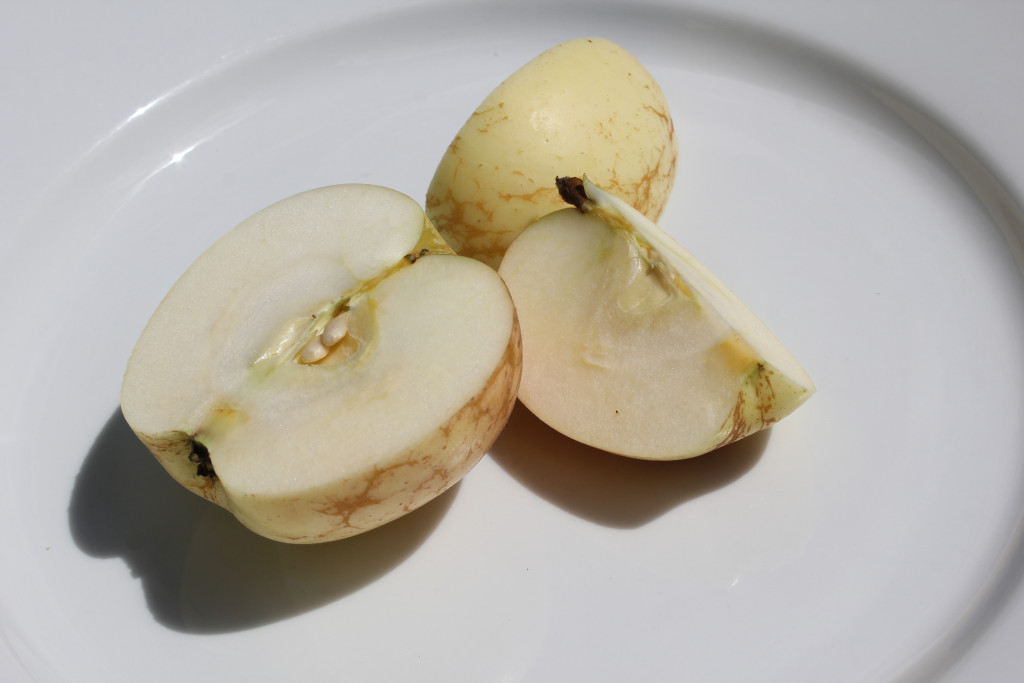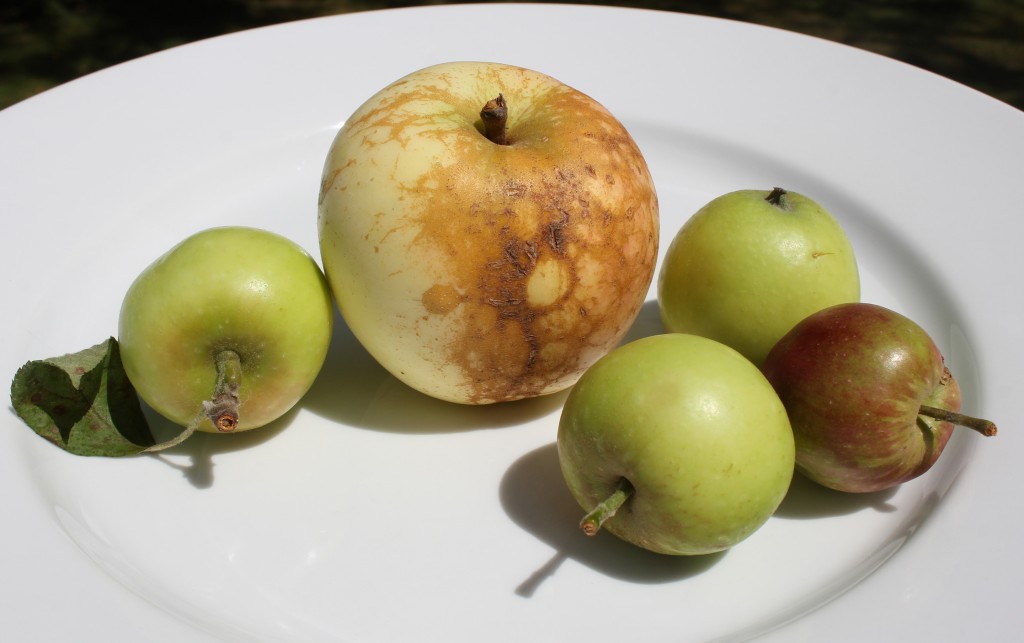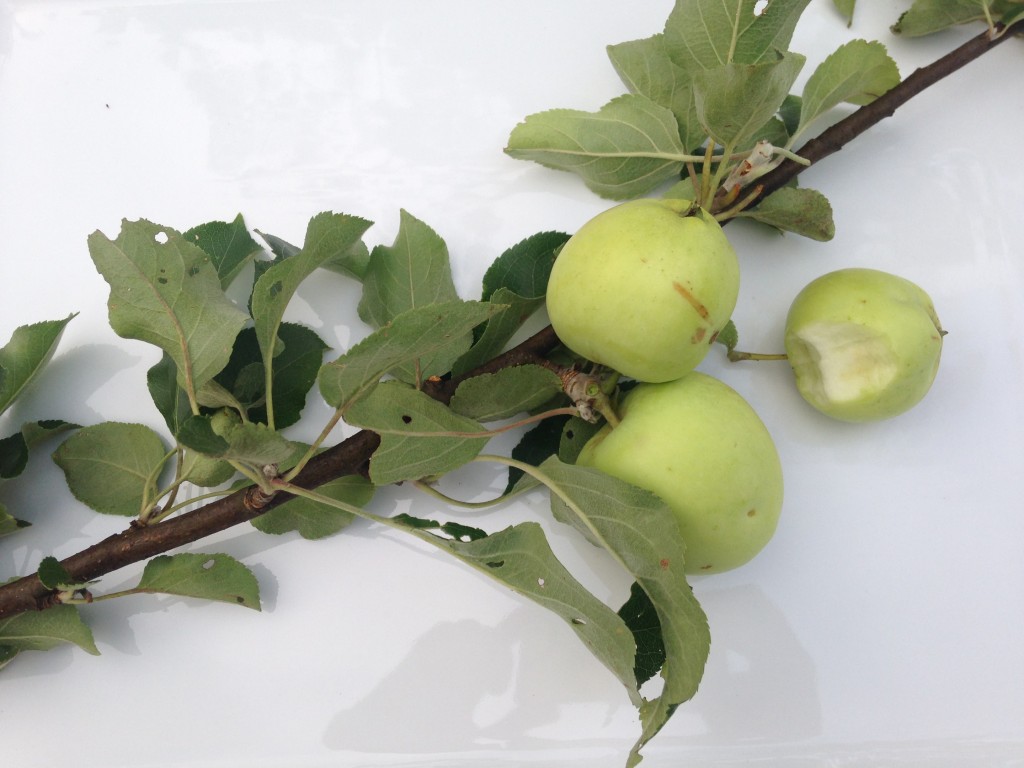It has been a remarkable summer for wild apple trees that seem to be everywhere you look. Much more conspicuous this year due to being so heavily laden with fruit, they’re all full to bursting with apples that are about two inches in diameter and mostly green in colour. Here in the Catskills, bear and deer are going to be feasting on them well into winter. The fruit is very tart to taste but make a superb apple sauce with the addition of sweeteners like honey, sugar or orange juice. They make a fantastic compote with berries. A noteworthy source of vitamin C and fibre, the apples will fit in just about any pie, cake or sauce. Soak them in vodka for a tart cocktail, a replacement for Cranberry juice, or add them to cider.
Apples are a notoriously demanding crop to cultivate and the apple you find in the grocery store today is a very distant, domesticated, manipulated, heavily treated ancestor of the wild apple. The trees are expertly pruned; it’s a high maintenance fruit, especially if you want an organic product.
The bark, leaves and fruit of the apple tree are appealing to almost every animal. Mice gird the tree (eat off the bark all the way around the tree), which kills it instantly. Raccoons, bear cubs and other small animals will climb a young tree and snap off limbs with their weight. Fungus, caterpillars, ants, and other bugs will eat the apple. Finally, the late frosts we’ve been having during spring serve to thwart the blossoming, putting an end to any hope of fruit for that tree for the year. Tips and tricks to protect young fruit: put clear plastic bags around the fruit and add a sticky girdle to the lower part of the bark to stop ants from climbing. Make good use of an electric fence. The development of an orchard is a lifelong project.
Our first apple from our budding orchard tasted sweet today despite being struck with some sort of skin affliction, but we didn’t let that stop us. It’s pictured below with its wild cousins, of which we have a great many on our property. Also pictured below is a branch from another apple tree that was broken off by wild, furry foragers. Stay tuned to Upstate Dispatch for some wild apple recipes in August. Foraging the wild food on your property is a great way to reduce your carbon footprint and reduce your exposure to pesticides.



i think most of the “wild” apples we find in the catskills and elsewhere upstate aren’t really wild; they’re feral leftovers–along with the stone walls–from the farmers that used to work the land.
according to michael pollan in “the botany of desire”, apples don’t grow well from seed and are usually “spitters”, only good for making cider. (he has a great story of johnny appleseed.) we’ve found lots of untended trees with delicious apples, some of which seem like some modern varieties (like macintoshes) and others seem to be heirloom varieties.
in any case, they’re great. i made some awesome apple sauce last fall.